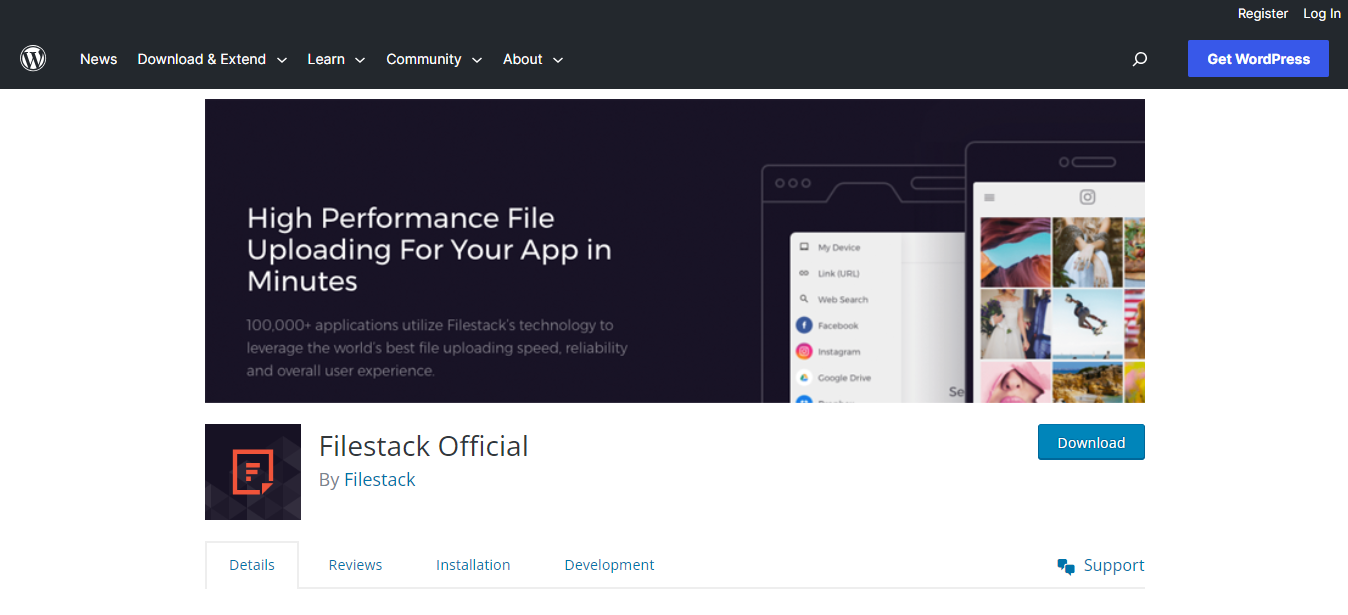Welcome to an exciting journey into E-Learning with File Uploading Sites! When we learn online, we often need to share and send files, like assignments and projects. Imagine uploading and accessing your files from anywhere using a file-uploading site! This blog will show you how websites let you upload files when you’re learning online. Moreover, you will also learn why this is so important.
We’ll talk about how a file-uploading site makes it easy to organize your files. Moreover, you will also learn about Filestack’s popular WordPress plugin. Let’s find out how these cool tools are changing how we learn on the internet!
What Are the File Uploading Requirements in Online Learning Platforms?
Online learning platforms, like the ones many schools use, there are certain rules for uploading files. These rules make it easier for students and teachers to share assignments, class materials, and student work.
Firstly, there are different types of files that people upload. For example, students upload completed assignments, and teachers create class notes and videos. These files help everyone learn and stay organized.
But these files can’t be too big. Just like you can’t send a super large video through text, online platforms also have limits on how big files can be. This is because big files might slow down the platform or crash. So, there’s a size limit to keep things running smoothly.
It’s not just about the file itself when you upload a file. It’s also about the details that come with it. This is called metadata. Think of it like the tags on your social media posts – they help you find and understand things better. When you upload a file, you can add a description and tags and say which class it’s for. This helps people find the right files and know what they’re about.
So, when using online learning sites, remember: you can upload different types of files, but they can’t be too huge. Also, don’t forget to give them some tags and information so everyone can use them easily. It’s all about making learning online simpler and better for everyone!

What Are Integration Options for File Uploading?
There are a few different ways to go about it when it comes to adding the ability to upload files to a website. Let’s break down the options in simpler terms.
First, we must look at websites and tools allowing file uploads. We’ll compare them based on important things like how well they handle large numbers of users. We will also check how safe they are and how much help they offer developers.
Once we pick the best tool for the job, we’ll need to fit it into the website’s “backend.” This involves setting up the tool’s special rules so only the right people can upload and access files. We’ll ensure everything is secure and only the right people can access the uploaded files.
Next, we’ll discuss how these files move from one place to another. We’ll look at options like FTP and HTTPS. We’ll pick the best one for keeping the files safe and compatible with the website.
Ultimately, it’s about picking the right tools and paths to ensure the website can handle file uploads safely and efficiently.
What Is the Filestack WordPress Plugin for File Uploading Sites?
The Filestack WordPress Upload tool helps visitors add files from their computers or online storage places. These can be Facebook, Instagram, Google Drive, and Dropbox.
To use it, add the Filestack shortcode to your post or page and say where you want the uploaded file to show up.
Once uploaded, you can show the files and media stuff in your post or page. The Filestack CDN makes sure your page loads fast and works well.
You can also edit pictures and files in the uploader, like cutting them or making them smaller. Or you can use special commands to make pictures and media better by cutting, resizing, squeezing, adding tags, filters, borders, and more.
You can use Filestack’s cloud storage or your favorite cloud places, like Amazon S3, Microsoft Azure, Dropbox, Rackspace, or Google Cloud Storage.
Features
- Connect with Facebook, Instagram, Google Drive, and Dropbox to add files.
- Upload many files at once.
- You can even upload big files, up to 5TB in size.
- Change your images in the uploader by cropping, making circles, or rotating.
- Uploads happen in the background for better efficiency.
- Files and media get delivered super fast thanks to the built-in Filestack CDN.
- Store your files by linking with Amazon S3, Microsoft Azure, Dropbox, Rackspace, and Google Cloud Storage.
Integration steps for Filestack’s WordPress plugin
- Put the plugin folder in the /wp-content/plugins/ folder.
- Turn on the plugin by going to the ‘Plugins’ menu in WordPress.
- Enter your Filestack API Key.
- Put Filestack shortcode into the blog post or page to show the upload button.
- You can also click the Filestack button in the Media area to upload files.
- Choose “Insert Into Post” to add the CDN resource to your post.
How does Filestack’s enhance file uploading in online learning platforms?
Filestack’s plugin makes uploading files to online learning platforms super easy. It helps you put up all kinds of files without any trouble. You can even organize and find your files because it pulls out important details and lets you search. And don’t worry about safety and privacy – this plugin keeps your files safe and follows all the rules. So, make your online learning better with Filestack’s cool plugin!
What Are the User Interface and Experience Considerations for a File Sharing Site?
Creating a user-friendly online learning platform involves smart design choices.
- First, let’s talk about file uploads. These are the buttons or areas where you put your files. They need to be easy to understand and use.
- Next, we want to show users how their file upload is going – like a loading bar. This helps them know things are working.
- Lastly, when things go wrong, we need to help users by saying what’s happening, like if their file is too big or there’s a network problem. This way, learning online becomes smoother for everyone.

How to Deal With File Management and Organization for File Uploading Sites
- Make your digital life easier by mastering techniques to arrange files. This involves creating clear file names, arranging files into folders, and setting up a logical system for quick retrieval.
- Learn about methods to uncover hidden details in files. This includes techniques like pulling out text from images. You can use OCR or connect with external tools to gather useful information.
- Enhance your file-finding abilities by implementing search and filtering tools. These features enable you to locate specific files based on multiple factors.
How to Deal With the Security and Data Privacy of File Uploading Sites?
When it comes to keeping things safe and private online, there are three important things to consider:
Access control
Access control means deciding who can look at or manage the files that people upload. This helps make sure only the right people can use the files.
Data encryption
Data encryption is like putting a secret code on files. It ensures that even if someone tries to see the files, they can’t understand them without the code.
Compliance considerations
Following the rules is also important. There are laws about handling people’s information, like GDPR and COPPA. We must follow these rules when working with files that people upload.

How To Increase Scalability and Performance Optimization Of File Uploading Sites
When we want to ensure our system can handle many people uploading files simultaneously, we do load testing. It’s like checking how well a car drives with lots of passengers. We also optimize, which means making things work faster and better. So, think of it as tuning up the car engine to run smoother when many people use it.
Imagine if we could make uploading files as fast and reliable as sending a text message, no matter where you are. That’s what Content Delivery Networks (CDNs) do. They help us spread files worldwide, so everyone gets them quickly, no matter where they are. It’s like having copies of your favorite book in libraries, so you can easily borrow it.
File Uploading Sites: Conclusion
Utilizing file-uploading sites offers clever solutions for enhancing E-learning experiences. These platforms simplify sharing and accessing educational materials, fostering interactive and dynamic learning. With interfaces and convenient features, educators and students can collaborate in the virtual classroom. Embracing such smart tools can pave the way for a more engaging and efficient E-learning journey for high school students and educators alike.
File Uploading Sites: FAQs
Where can I upload files for free?
You can upload files for free on File Uploading Sites like Filestack, Google Drive, Dropbox, and OneDrive.
Where can I upload files?
Filestack allows you to upload files easily, offering a seamless way to manage and share your content online.
What is the best site to upload large files?
Some of the top sites for uploading big files are Filestack and Google Drive, which offer ample storage and easy sharing.
Do file-sharing sites still exist?
Yes, file-sharing sites like Filestack are still around, making it easy to share and access files online efficiently.
Unlock the Power of Filestack – Simplify File Management, Sharing, and Integration. Try Filestack Today!
Ayesha Zahra is a Geo Informatics Engineer with hands-on experience in web development (both frontend & backend). Also, she is a technical writer, a passionate programmer, and a video editor. She is always looking for opportunities to excel in her skills & build a strong career.
Read More →


